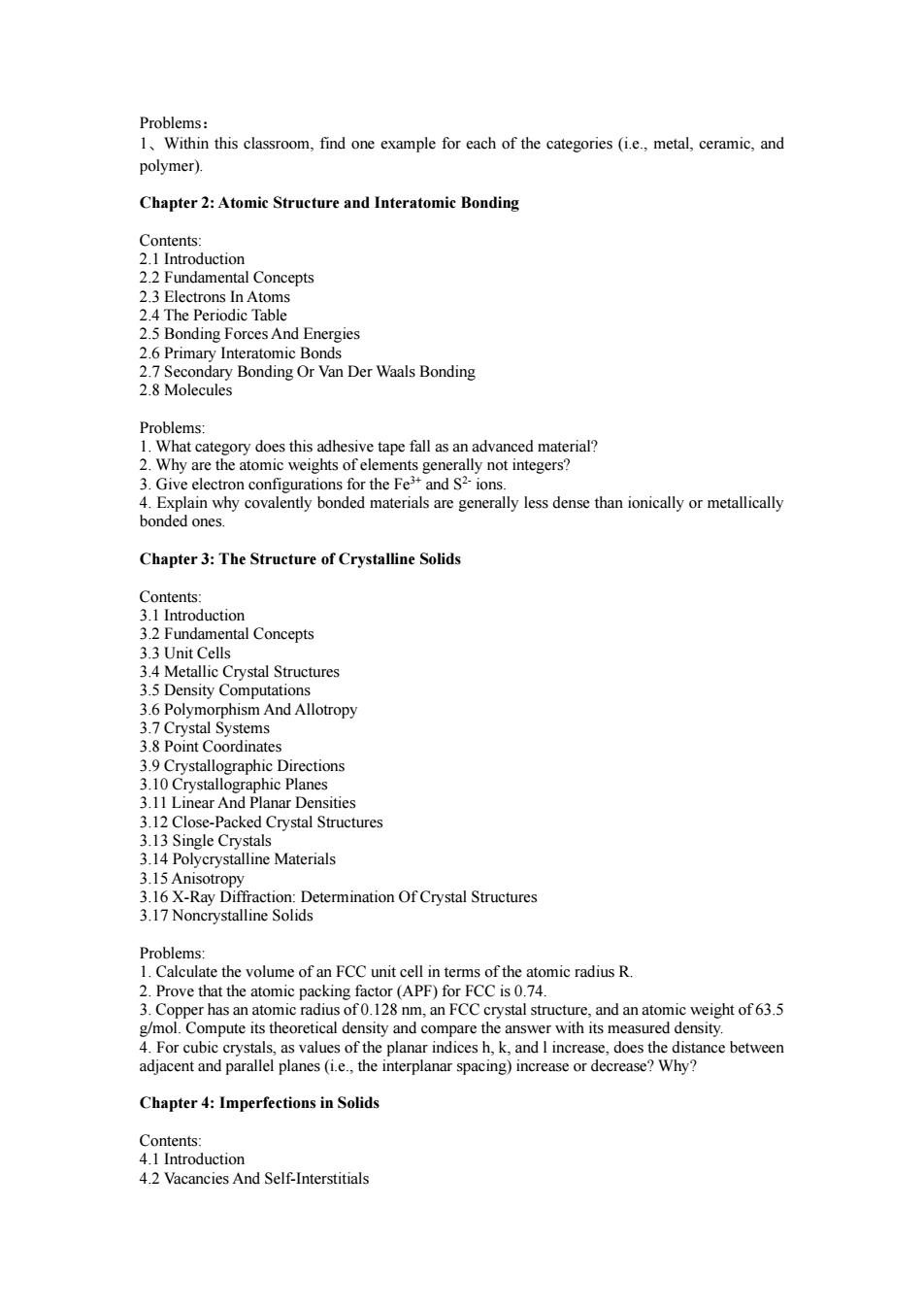正在加载图片...

Problems: 1.Within this classroom,find one example for each of the categories (ie.,metal,ceramic,and polymer). Chapter 2:Atomic Structure and Interatomic Bonding 22 Fundamental Concepts 2.5 Bonding Forces And Energies oiacgpydoesthsadhesveapea创snaheaceadngrar 2.Why are the atomic weights ofel s generally not integers? than metalical bonded ones. Chapter 3:The Structure of Crystalline Solids Satam Fudamemtal Concept 3.6 Polymorphism And Allotropy 3.9Crystallographic Directions And sities 3.12 Close-Packed Crystal Structures 315 Anisot 3.1 D eeion Of Cysal ucture 3.Copper has an atomic radiusof.FCCcrystal structure,and an atomic weight of63.5 1.Compute its th Chapter4:Imperfections in Solids 42 Vacancies And Self-InterstitialsProblems: 1、Within this classroom, find one example for each of the categories (i.e., metal, ceramic, and polymer). Chapter 2: Atomic Structure and Interatomic Bonding Contents: 2.1 Introduction 2.2 Fundamental Concepts 2.3 Electrons In Atoms 2.4 The Periodic Table 2.5 Bonding Forces And Energies 2.6 Primary Interatomic Bonds 2.7 Secondary Bonding Or Van Der Waals Bonding 2.8 Molecules Problems: 1. What category does this adhesive tape fall as an advanced material? 2. Why are the atomic weights of elements generally not integers? 3. Give electron configurations for the Fe3+ and S2- ions. 4. Explain why covalently bonded materials are generally less dense than ionically or metallically bonded ones. Chapter 3: The Structure of Crystalline Solids Contents: 3.1 Introduction 3.2 Fundamental Concepts 3.3 Unit Cells 3.4 Metallic Crystal Structures 3.5 Density Computations 3.6 Polymorphism And Allotropy 3.7 Crystal Systems 3.8 Point Coordinates 3.9 Crystallographic Directions 3.10 Crystallographic Planes 3.11 Linear And Planar Densities 3.12 Close-Packed Crystal Structures 3.13 Single Crystals 3.14 Polycrystalline Materials 3.15 Anisotropy 3.16 X-Ray Diffraction: Determination Of Crystal Structures 3.17 Noncrystalline Solids Problems: 1. Calculate the volume of an FCC unit cell in terms of the atomic radius R. 2. Prove that the atomic packing factor (APF) for FCC is 0.74. 3. Copper has an atomic radius of 0.128 nm, an FCC crystal structure, and an atomic weight of 63.5 g/mol. Compute its theoretical density and compare the answer with its measured density. 4. For cubic crystals, as values of the planar indices h, k, and l increase, does the distance between adjacent and parallel planes (i.e., the interplanar spacing) increase or decrease? Why? Chapter 4: Imperfections in Solids Contents: 4.1 Introduction 4.2 Vacancies And Self-Interstitials